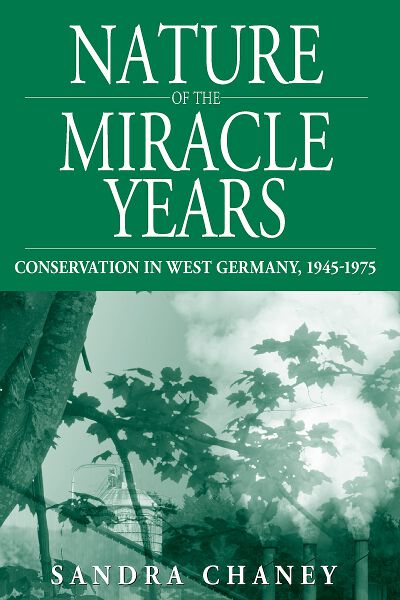Nature of the Miracle Years: Conservation in West Germany, 1945-1975 by Sandra Chaney, appeared in paperback in August 2012. In the post below, the author discusses the three case studies that form the backbone of the book. Berghahn Books is proud to draw attention once more to Nature of the Miracle Years, which won the Choice Award for Outstanding Academic Title in 2009.
____________________________________
 A rewarding part of this project involved writing three cases studies which focus on preserving a scenic gorge, landscaping a canalized river, and restoring “wild” nature to a managed forest. Taken together, these stories capture important shifts in West German efforts to restore varying degrees of naturalness in their intensively used landscapes. Research took me to the Black Forest, the Mosel Valley, and the Bavarian Forest, and to the homes and offices of dedicated conservationists. Whether perusing Black Forest Society records in the basement of a retired forester or reviewing hundreds of postcards protesting the Mosel Canal in the Foreign Office archives, I was struck by the daunting challenge conservationists faced in promoting sustainable uses of nature when more powerful groups favored exploiting it and when legal and administrative support systems for conservation remained weak.
A rewarding part of this project involved writing three cases studies which focus on preserving a scenic gorge, landscaping a canalized river, and restoring “wild” nature to a managed forest. Taken together, these stories capture important shifts in West German efforts to restore varying degrees of naturalness in their intensively used landscapes. Research took me to the Black Forest, the Mosel Valley, and the Bavarian Forest, and to the homes and offices of dedicated conservationists. Whether perusing Black Forest Society records in the basement of a retired forester or reviewing hundreds of postcards protesting the Mosel Canal in the Foreign Office archives, I was struck by the daunting challenge conservationists faced in promoting sustainable uses of nature when more powerful groups favored exploiting it and when legal and administrative support systems for conservation remained weak.
The first case study investigates conservationists’ struggle in the 1950s to preserve the Wutach River and Gorge from development by a state-owned utility company intent on damming the river to generate peak energy for the Black Forest region. Using newly restored democratic institutions, conservationists galvanized local support to oppose the company. Their activism was emboldened by state and federal officials who eventually demanded that projects, even those of limited scale like the Wutach, be evaluated in the context of regional water management plans—ultimately to support multiple uses that would sustain economic growth. Facing organized opposition, the utility company abandoned its plans for the Wutach but pursued even larger projects in the area.
Not long after this modest victory for preservation, conservationists found unlikely allies in a group of Ruhr industrialists, but failed to prevent the scenic Mosel River from being canalized as part of France’s plans to establish a common market for coal and steel. Because the river was an international waterway, its fate was decided by Chancellor Adenauer. Pressured by France, he agreed to canalization, but also secured important concessions, including the return of coal-rich Saarland and modifications to the Rhine Lateral Canal. During construction (1956-1964), conservationists hoped to play a leading role in naturalizing the engineered channel. But they were only partially successful, hindered by a lack of trained personnel, loopholes in existing laws, and the rapid timetable for construction.
The third case study examines one of conservationists’ most successful undertakings during the postwar “miracle years.” In the late 1960s a vocal minority of conservationists, including Frankfurt Zoo director Bernhard Grzimek, worried about vanishing opportunities for West Germans to experience “wild” nature. So, they spearheaded a plan to transform the managed Bavarian Forest into West Germany’s first national park, complete with reintroduced wildlife. State foresters denounced the project, as did supporters of the country’s successful recreational nature park program. But the Bavarian government endorsed the national park, hoping it would revitalize the region’s depressed economy. Approved as a regional development project, the national park became a revenue-generating space where species and natural processes were protected for scientific observation and public enjoyment—and for their own sake.
The case studies helped me integrate the story of conservation into the mainstream of West German history, revealing a gradual democratization of society, increased scientific management of landscapes, and a partial greening of society and politics. Germany’s experience remains instructive in our era of climate change because this densely populated, economically advanced country boasts a hard-won, favorable record on environmental reform and sustainable development.
______________________________
Sandra Chaney is Professor of History at Erskine College in Due West, South Carolina, where she teaches courses in European and women’s history and contemporary global issues.
